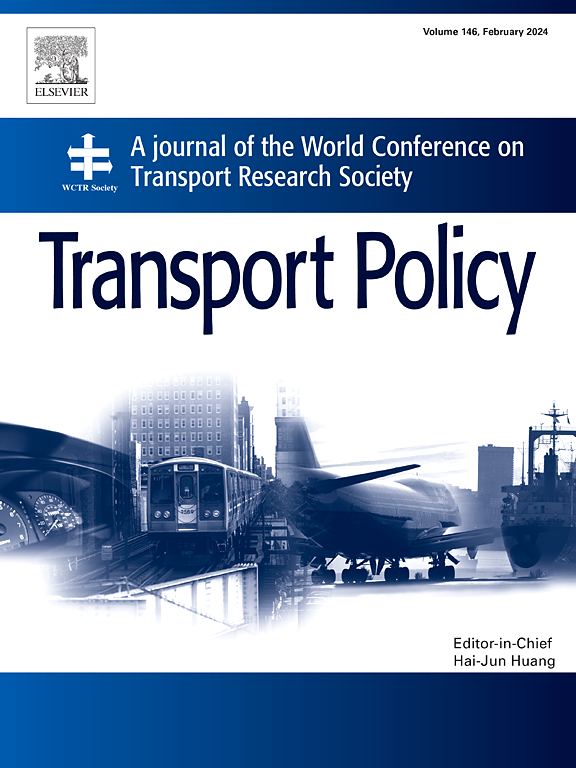Evaluation of transport carbon efficiency, reduction potential, and influencing factors in Africa
IF 6.3
2区 工程技术
Q1 ECONOMICS
引用次数: 0
Abstract
Africa aims to promote low emission development pathways. As the second-highest CO2 emitting sector and contributing to an annual average pollution cost of 6.14% of GDP, the transport sector poses a major barrier to sustainable growth. Enhancing transport carbon emission efficiency is essential for achieving both sustainable growth and emission reduction; however, empirical insights regarding Africa remain limited. Therefore, this study employs non-parametric metafrontier technique to asses transport carbon efficiency, reduction potentials, and sources of emission reduction potentials across forty African countries from 2000 to 2020. Panel regression is employed to identify external factors influencing regional carbon efficiency. The findings reveal that transport carbon efficiency (TCE) in Africa averages 0.372, indicating low performance. Central Africa leads the continent's optimal green production technology based on the technology gap ratio, closely followed by Southern Africa. Moreover, the potential for CO2 emission reduction is estimated at 74.479 % of total TCE, averaging 5583.649 kt annually. Over two-thirds of the emission reduction potential is attributed to addressing management inefficiencies. External influencing factors on TCE exhibit regional heterogeneity. Transport value-added per capita improves TCE in all regions, while energy intensity and renewable energy diminishes it. Sulphur content in diesel, urbanization, institutional quality, business relations, structural change, and FDI have mixed effects. The findings underscore the need for targeted policies to boost carbon efficiency and align transport planning with regional priorities.
求助全文
约1分钟内获得全文
求助全文
来源期刊

Transport Policy
Multiple-
CiteScore
12.10
自引率
10.30%
发文量
282
期刊介绍:
Transport Policy is an international journal aimed at bridging the gap between theory and practice in transport. Its subject areas reflect the concerns of policymakers in government, industry, voluntary organisations and the public at large, providing independent, original and rigorous analysis to understand how policy decisions have been taken, monitor their effects, and suggest how they may be improved. The journal treats the transport sector comprehensively, and in the context of other sectors including energy, housing, industry and planning. All modes are covered: land, sea and air; road and rail; public and private; motorised and non-motorised; passenger and freight.
 求助内容:
求助内容: 应助结果提醒方式:
应助结果提醒方式:


